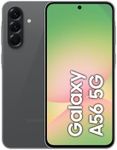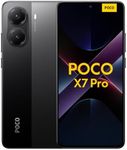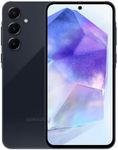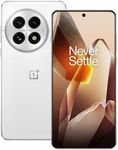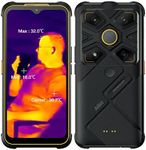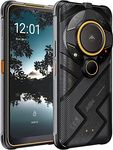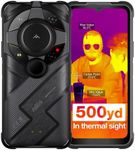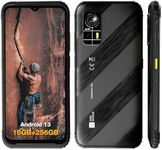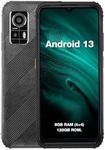Buying Guide for the Best Android Phones
Choosing the right Android phone can be a daunting task given the plethora of options available in the market. To make an informed decision, it's essential to understand the key specifications and how they align with your needs. Here are some important specs to consider when selecting an Android phone, along with explanations to help you navigate through them.DisplayThe display is the screen of the phone where you view all your content. It's important because it affects your overall viewing experience. Displays come in various sizes and resolutions. Smaller screens (around 5-6 inches) are more compact and easier to handle, while larger screens (6.5 inches and above) are better for media consumption and multitasking. Resolution, measured in pixels, determines the clarity of the display. Higher resolutions like Full HD (1080p) and Quad HD (1440p) offer sharper images. Choose a display size and resolution based on how you plan to use your phone – for example, a larger, high-resolution screen is great for watching videos and gaming, while a smaller screen might be more convenient for one-handed use.
Battery LifeBattery life indicates how long your phone can operate before needing a recharge. It's crucial for ensuring your phone lasts throughout the day. Battery capacity is measured in milliampere-hours (mAh). Phones with higher mAh ratings generally last longer. For light users who mainly text and make calls, a battery around 3000-4000 mAh might suffice. Moderate users who browse the web and use social media might need 4000-5000 mAh. Heavy users who play games or stream videos should look for batteries above 5000 mAh. Consider your daily usage patterns to determine the right battery capacity for you.
Camera QualityCamera quality is important for capturing photos and videos. It is determined by several factors including the number of megapixels (MP), aperture size, and additional features like optical image stabilization (OIS). Higher megapixels can capture more detail, but other factors like sensor quality and software processing also play a role. For casual photography, a camera with 12-16 MP and good software optimization should be sufficient. If you are a photography enthusiast, look for phones with multiple lenses (wide, ultra-wide, telephoto) and advanced features. Consider what kind of photos you like to take and choose a camera setup that meets those needs.
ProcessorThe processor, or chipset, is the brain of the phone, affecting its speed and performance. It's important for running apps smoothly and handling multitasking. Processors are often categorized into entry-level, mid-range, and high-end. Entry-level processors are suitable for basic tasks like calling and texting. Mid-range processors offer a balance of performance and efficiency, ideal for everyday use and moderate gaming. High-end processors provide top-tier performance for demanding tasks like high-end gaming and video editing. Choose a processor based on how you plan to use your phone – for example, a high-end processor is necessary for power users, while a mid-range one is sufficient for most users.
StorageStorage determines how much data you can keep on your phone, including apps, photos, videos, and files. It's important because running out of storage can slow down your phone and limit its functionality. Storage is measured in gigabytes (GB). Entry-level phones may offer 32GB or 64GB, which is suitable for basic use. Mid-range phones typically have 128GB, which is good for average users. High-end phones offer 256GB or more, ideal for users who store a lot of media or large apps. Consider your storage needs based on your usage patterns – for example, if you take a lot of photos or download many apps, opt for higher storage.
RAMRAM (Random Access Memory) affects how well your phone can handle multitasking and run multiple apps simultaneously. It's important for ensuring smooth performance. RAM is measured in gigabytes (GB). Entry-level phones may have 2-4GB of RAM, which is sufficient for basic tasks. Mid-range phones typically offer 6-8GB, suitable for most users. High-end phones come with 12GB or more, ideal for heavy multitasking and gaming. Choose the amount of RAM based on your usage – for example, if you frequently switch between apps or play resource-intensive games, opt for more RAM.
Operating System and UpdatesThe operating system (OS) is the software that runs your phone. It's important because it affects the user interface, features, and security. Android phones come with different versions of the OS, and manufacturers may add their own customizations. Regular updates are crucial for security and new features. Look for phones that offer the latest Android version and a good track record of updates. Consider how important software updates are to you – for example, if you want the latest features and security patches, choose a phone with a strong update policy.
Build Quality and DesignBuild quality and design affect the durability and aesthetics of the phone. It's important because it influences how the phone feels in your hand and how well it can withstand wear and tear. Phones can be made from plastic, metal, or glass. Plastic is lightweight and durable, metal offers a premium feel, and glass looks elegant but can be fragile. Consider what materials and design elements are important to you – for example, if you want a premium look and feel, opt for metal or glass, but if durability is a priority, plastic might be a better choice.
